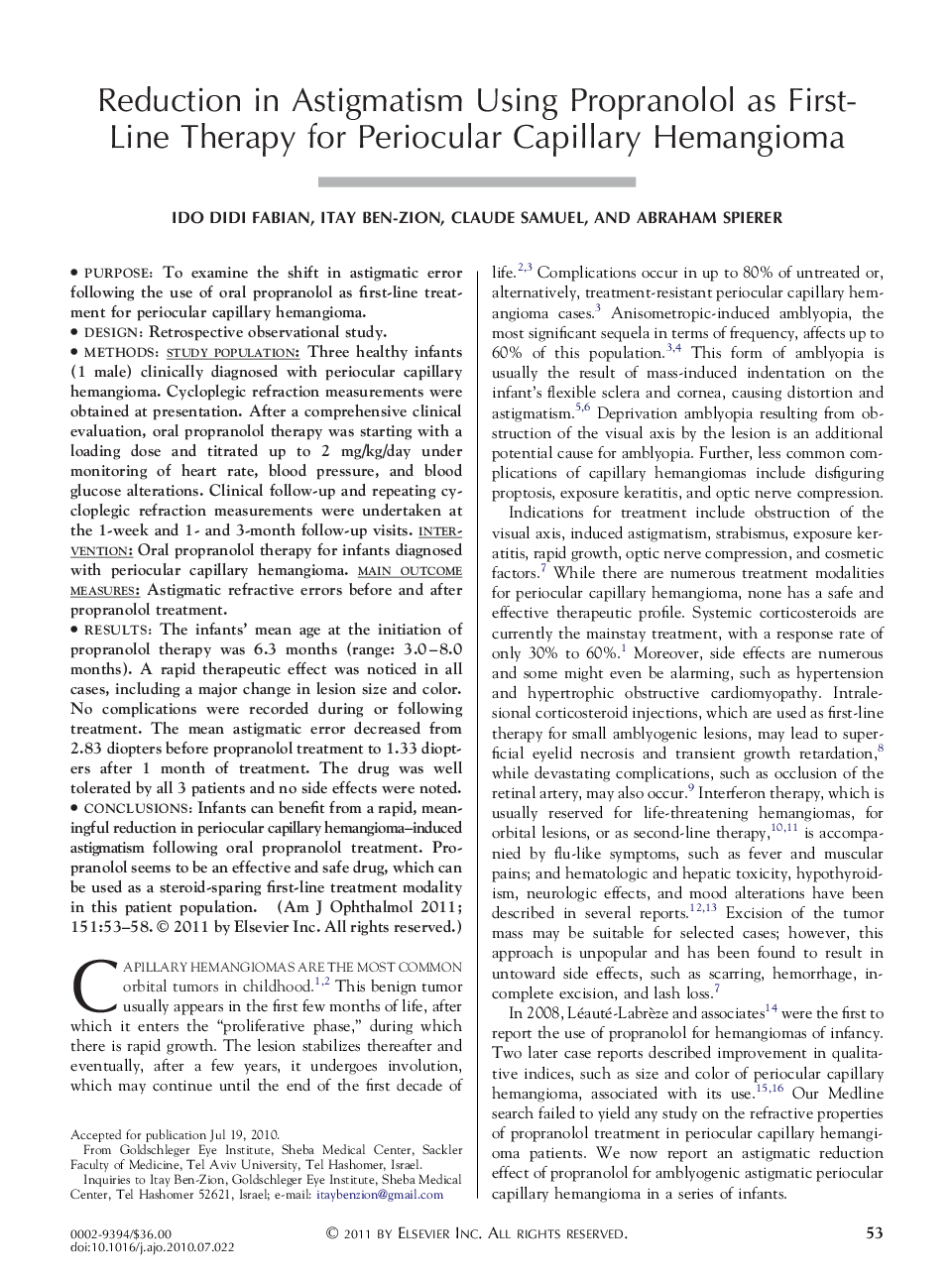| Article ID | Journal | Published Year | Pages | File Type |
|---|---|---|---|---|
| 4003543 | American Journal of Ophthalmology | 2011 | 6 Pages |
PurposeTo examine the shift in astigmatic error following the use of oral propranolol as first-line treatment for periocular capillary hemangioma.DesignRetrospective observational study.Methodsstudy population: Three healthy infants (1 male) clinically diagnosed with periocular capillary hemangioma. Cycloplegic refraction measurements were obtained at presentation. After a comprehensive clinical evaluation, oral propranolol therapy was starting with a loading dose and titrated up to 2 mg/kg/day under monitoring of heart rate, blood pressure, and blood glucose alterations. Clinical follow-up and repeating cycloplegic refraction measurements were undertaken at the 1-week and 1- and 3-month follow-up visits. intervention: Oral propranolol therapy for infants diagnosed with periocular capillary hemangioma. main outcome measures: Astigmatic refractive errors before and after propranolol treatment.ResultsThe infants' mean age at the initiation of propranolol therapy was 6.3 months (range: 3.0–8.0 months). A rapid therapeutic effect was noticed in all cases, including a major change in lesion size and color. No complications were recorded during or following treatment. The mean astigmatic error decreased from 2.83 diopters before propranolol treatment to 1.33 diopters after 1 month of treatment. The drug was well tolerated by all 3 patients and no side effects were noted.ConclusionsInfants can benefit from a rapid, meaningful reduction in periocular capillary hemangioma–induced astigmatism following oral propranolol treatment. Propranolol seems to be an effective and safe drug, which can be used as a steroid-sparing first-line treatment modality in this patient population.
